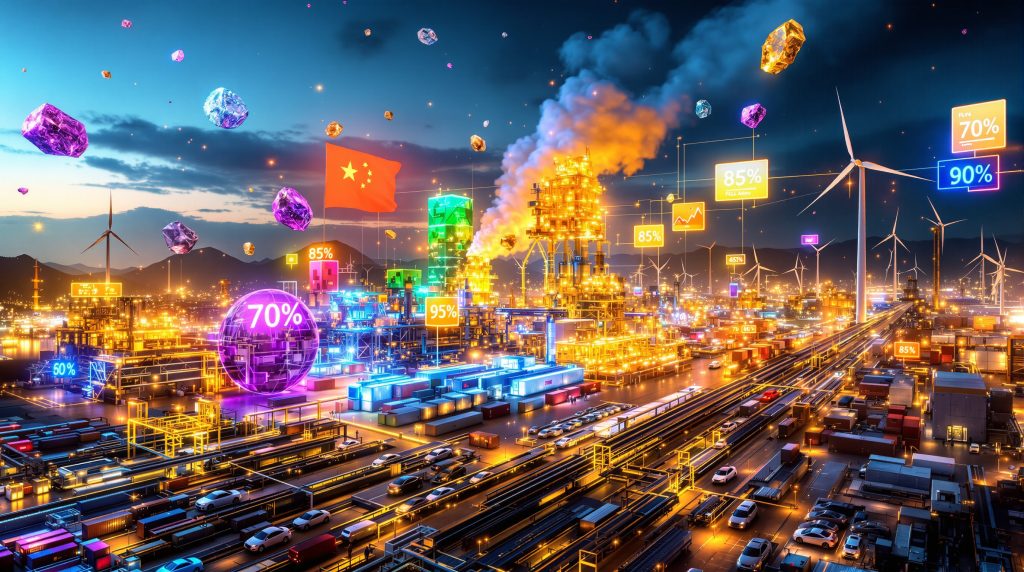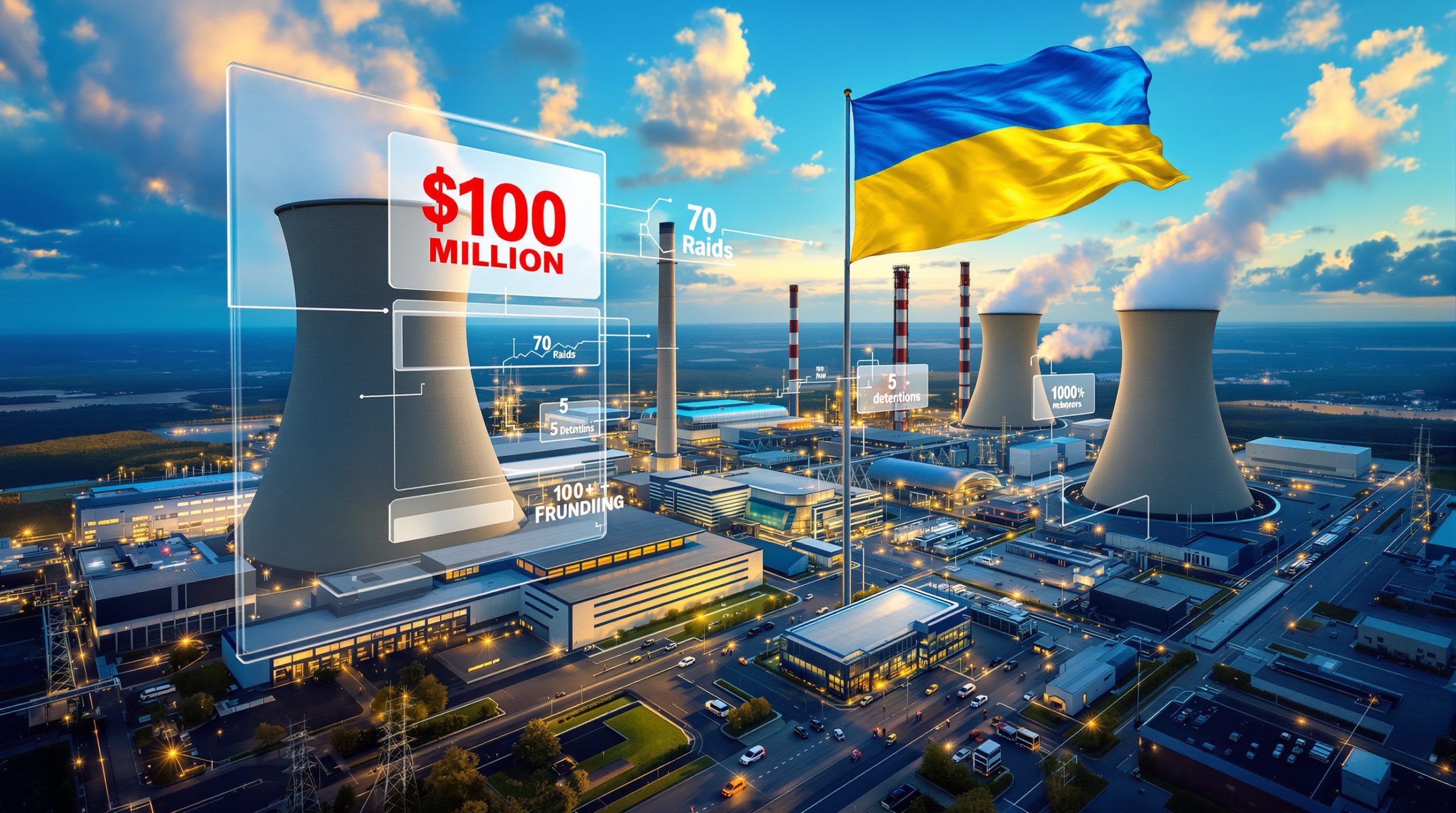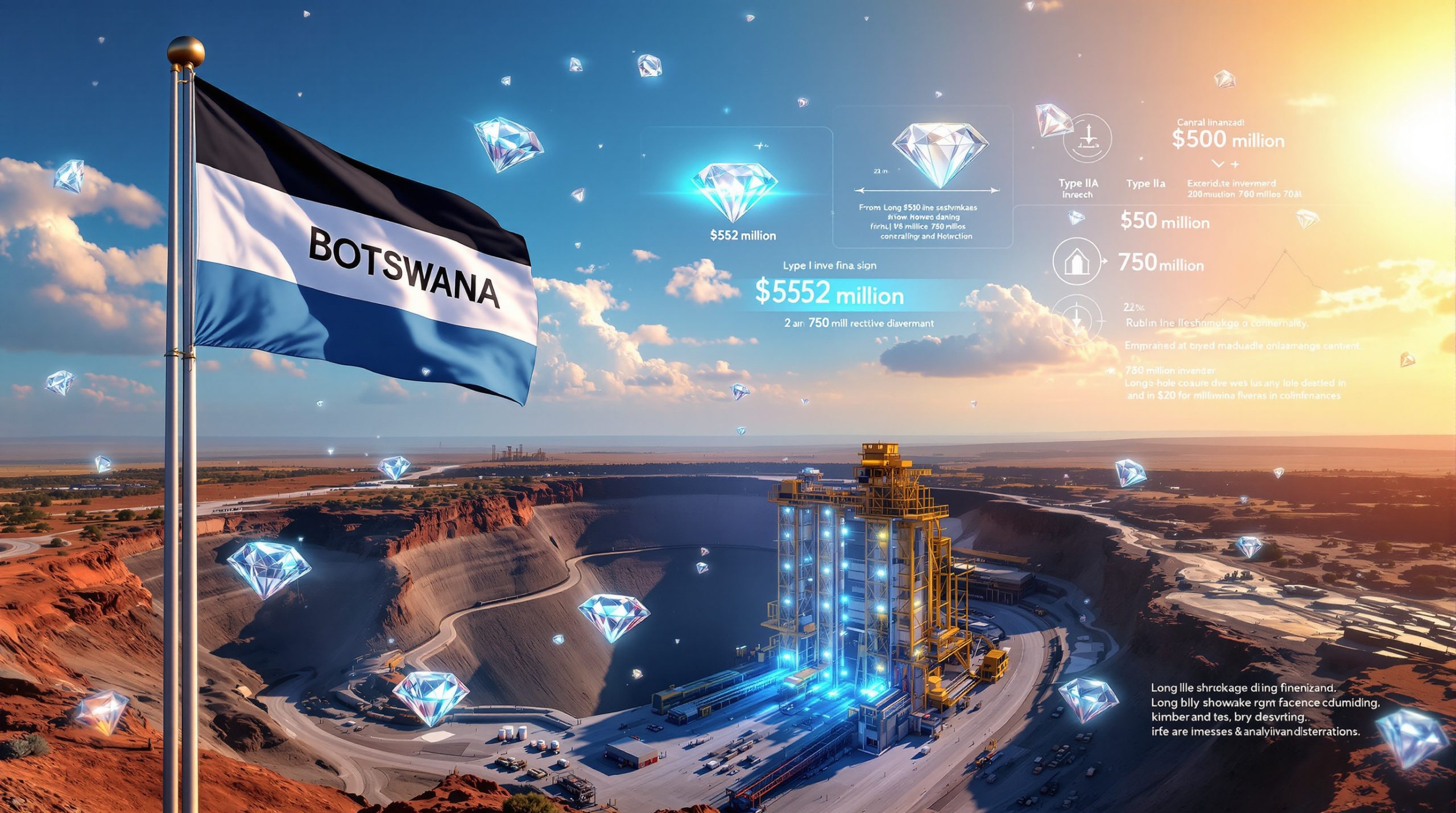Understanding China's Strategic Grip on Critical Materials
China's unprecedented control over rare earth elements has become a defining force in global manufacturing, with the nation commanding approximately 70% of global mining operations, 85% of refining capacity, and an overwhelming 90% of rare earth magnet production. This dominance extends even further into heavy rare earths, where China controls 99.8% of global refining capacity, creating virtually no viable alternatives for manufacturers worldwide.
The strategic importance of rare earths export controls cannot be overstated. These materials form the backbone of modern technology, from automotive components to defence systems, making China's export restrictions a powerful geopolitical tool that can reshape entire industries within months.
The situation has reached a critical point where alternative supply chains remain years away from viability, while Chinese suppliers maintain the ability to influence global manufacturing through supply restrictions.
What Elements Are Targeted by China's Export Restrictions?
China's latest export controls, announced on October 9, 2025, represent the most comprehensive tightening of rare earth access in recent history. The restrictions, which took effect on November 8, 2025, target a broad spectrum of critical materials essential to the critical minerals energy transition.
Heavy Rare Earths Under Restriction
The controls specifically encompass several heavy rare earth elements essential for high-performance applications:
• Ytterbium – Critical for laser applications and medical devices
• Holmium – Used in speciality magnets and nuclear applications
• Europium – Essential for phosphors and display technologies
Scope of Export Limitations
The restrictions extend beyond raw materials to include:
• Processing equipment and manufacturing technologies
• Finished products containing Chinese-sourced rare earth materials
• Related technologies used in rare earth processing and refinement
Beijing has simultaneously made export licensing more restrictive, creating additional barriers for companies attempting to secure supplies before deadlines. Furthermore, Chinese rare earth exporters reported receiving a surge of orders from overseas clients immediately following the October announcement, highlighting the industry's panic response to potential supply disruptions.
How Are Automotive Manufacturers Responding to Supply Threats?
Critical Dependencies in Vehicle Manufacturing
Rare earth magnets serve as essential components across numerous automotive systems, including side mirrors, speakers, oil pumps, windshield wipers, fuel leakage sensors, and braking sensors. Electric vehicles face even greater vulnerability due to their reliance on rare earth-powered motor systems.
The timeline pressures are severe. With shipping times from China to Europe exceeding 45 days, manufacturers face a narrow window to secure materials before restrictions fully impact supply chains.
Industry Leaders Sound the Alarm
Industry executives have expressed grave concerns about the potential for widespread production disruptions. Toyota's North America Group Vice President of Purchasing Supplier Development warned that China possesses the capability to shut down the entire automotive industry within two months through rare earths export controls.
Similarly, Bosch's President for France, Benelux, West and South Europe anticipated that the automotive industry would aggressively stockpile rare earths ahead of the November deadline.
Supply Chain Responses and Challenges
Automotive manufacturers are implementing several defensive strategies:
Inventory Depletion Crisis: Many suppliers report that stockpiles built earlier in 2025 have already been exhausted. German metal-powder supplier NMD indicates they are essentially sold out with severely limited inventory remaining.
Accelerated Recycling Initiatives: Renault-backed company Neutral currently processes rare earths from 400,000 vehicles annually in France, maintaining contracts with 15 European brands. However, scaling these operations presents significant challenges.
Geographic Diversification Limitations: Whilst countries like Sweden possess rare earth deposits, they lack the essential mining infrastructure and refining capacity to serve as immediate alternatives to Chinese suppliers.
What Are the Broader Industrial Implications?
Multi-Sector Vulnerabilities
The export restrictions create cascading effects across numerous industries beyond automotive manufacturing. Electronics production, renewable energy systems, and defence applications all face potential disruptions due to rare earth dependencies.
Recent geopolitical tensions have compounded these challenges. An intellectual property dispute between China and the Netherlands involving Dutch chip-maker Nexperia has sparked additional concerns about factory closures, as the company supplies critical semiconductor components for automotive parts.
Economic Timeline Pressures
The compressed timeline for adaptation creates unprecedented pressure on global supply chains. For instance, companies must make rapid strategic decisions about sourcing alternatives whilst managing the reality that most alternative technologies remain years from commercial viability.
China has also implemented export restrictions on lithium-ion batteries and battery materials, creating additional pressure points for electric vehicle manufacturers already struggling with rare earths export controls. This development reflects insights from battery-grade lithium refinery insights across global markets.
Trade Relations Complexity
U.S. tariff policies add another layer of complexity to the supply chain challenges. Automakers are expected to detail the financial impact of these combined pressures in their quarterly earnings reports, highlighting the interconnected nature of these trade and supply chain disruptions. However, the US‑China trade war impact extends far beyond single sectors.
How Are Companies Developing Rare Earth-Free Technologies?
Motor Technology Innovation Efforts
Several major manufacturers have accelerated development of alternative motor designs to reduce rare earth dependence:
General Motors and ZF are advancing electric vehicle motor technologies with minimal rare earth content, though commercial deployment remains years away.
BMW and Renault have successfully produced prototype motors that eliminate rare earth requirements entirely, demonstrating the technical feasibility of alternative approaches.
BorgWarner continues developing low-rare-earth motor technologies for next-generation vehicle applications.
AI-Driven Optimisation Solutions
UK-based company Monumo employs artificial intelligence and advanced simulation technologies to help existing manufacturers reduce rare earth content in current production motors. The company reports achieving an average 24% reduction in rare earth usage among its customers, which include several of the world's top ten automotive manufacturers.
This approach offers immediate benefits by optimising existing designs rather than requiring complete motor redesigns, providing a faster path to reduced dependency on Chinese supplies.
Commercial Viability Challenges
Despite technological progress, most rare earth-free motor solutions remain years from widespread commercial adoption. The development timeline creates a critical gap between current supply restrictions and alternative technology availability, forcing companies to navigate this transition period through stockpiling and supply diversification strategies.
What Are the Long-Term Strategic Implications?
Competitive Dynamics and Pricing Strategies
China's approach to maintaining market control extends beyond export restrictions to include aggressive pricing strategies. Industry experts note that Beijing can undermine alternative supply chain development by keeping rare earth prices artificially low, making investment in rare earth-free technologies economically challenging.
This creates what supply chain specialists describe as a risky investment environment where companies must balance higher costs for alternative technologies against potentially cheaper Chinese-supplied components that remain subject to rare earths export controls.
Regional Policy Response Variations
The current U.S. administration under President Trump has reportedly taken the supply security threat more seriously than European counterparts. Recent executive order on critical minerals demonstrates more aggressive policies to reduce dependency on Chinese rare earth supplies. This divergence in policy approaches may create different competitive advantages and vulnerabilities across regions.
Continued Export Control Evolution
Industry experts predict that current restrictions represent only the beginning of China's use of rare earth exports as a strategic tool. Rare-earth trader Tradium's senior management indicates that additional export controls are likely, suggesting companies must prepare for increasingly restrictive trade environments.
Investment and Infrastructure Challenges
Whilst efforts to develop rare earth processing facilities outside China are underway, these initiatives face substantial capital requirements and technical challenges. The lengthy development timelines for alternative processing capacity create extended periods of vulnerability for manufacturers dependent on these materials. Consequently, European raw materials projects face unprecedented pressure to accelerate development.
How Can Industries Prepare for Continued Export Restrictions?
Immediate Risk Mitigation Strategies
Comprehensive Supply Chain Mapping: Companies must identify all rare earth dependencies throughout their supply networks, including secondary and tertiary suppliers that may not be immediately apparent but could create bottlenecks during restrictions.
Strategic Partnership Development: Forming alliances with non-Chinese suppliers, recycling companies, and technology developers provides multiple pathways for securing materials and reducing single-source dependencies.
Technology Investment Acceleration: Despite higher initial costs, investing in rare earth-free alternatives offers long-term supply security and reduced exposure to geopolitical supply disruptions.
Long-Term Adaptation Planning
Circular Economy Integration: Expanding rare earth recycling capabilities reduces dependence on primary mining operations and creates more resilient supply chains. Companies like Neutral demonstrate the potential for scaling recycling operations, though significant investment and infrastructure development remain necessary.
Infrastructure Development Support: Supporting the development of rare earth processing facilities outside China requires coordinated industry investment despite significant capital requirements and uncertain returns due to potential Chinese price competition.
Regulatory Compliance Preparation: Companies must develop frameworks for navigating evolving trade regulations and export controls whilst maintaining operational flexibility.
Supply Security Frameworks
Organisations need to establish supply security frameworks that balance cost efficiency with supply chain resilience. This includes developing contingency plans for various restriction scenarios and maintaining strategic inventory levels that account for extended supply disruptions.
What Does the Future Hold for Rare Earth Supply Chains?
Evolving Restriction Landscape
Industry analysts anticipate that China's export controls will continue expanding rather than stabilising at current levels. This ongoing evolution requires companies to maintain adaptive strategies rather than treating current restrictions as a temporary disruption.
The pattern of restrictions earlier in 2025 that depleted existing stockpiles, followed by more comprehensive controls in October, suggests a systematic approach to tightening supply access that may continue evolving.
Technology Development Timeline Reality
Whilst rare earth-free technologies show promise, the reality of development timelines means most alternatives remain years from commercial viability. This creates a critical period where companies must navigate supply restrictions through traditional sourcing strategies whilst investing in longer-term technological solutions.
Geopolitical Integration
Rare earths export controls have become integral to broader geopolitical relationships, particularly U.S.-China trade dynamics under the current Trump administration. Companies operating in this environment must consider how supply chain decisions align with evolving international trade policies and diplomatic relationships.
Market Psychology and Investment Patterns
The combination of supply uncertainty and technological development creates complex investment decisions for companies across affected industries. Balancing immediate supply security needs with long-term strategic positioning requires sophisticated risk assessment and resource allocation strategies.
Industry Transformation Acceleration
The current crisis is accelerating fundamental changes in how companies approach critical material sourcing. Organisations that successfully navigate these challenges through strategic planning, technology innovation, and supply chain diversification will establish competitive advantages in an increasingly complex geopolitical environment.
In addition, analyses from the Centre for Strategic and International Studies suggest that defence supply chains face particularly severe vulnerabilities from China's new restrictions.
Disclaimer: The analysis presented reflects market conditions and expert opinions as of October 2025. Supply chain dynamics, export control policies, and technological development timelines remain subject to rapid changes based on geopolitical developments and market forces. Companies should conduct independent analysis and consult with supply chain specialists when making strategic decisions regarding rare earth sourcing and alternative technology investments.
The transformation of global rare earth supply chains represents one of the most significant industrial challenges of the current decade, requiring coordinated responses across government, industry, and technology sectors to ensure supply security whilst maintaining economic competitiveness in an environment where access to critical materials has become a key competitive differentiator.
Seeking Investment Opportunities in Critical Materials Companies?
Discovery Alert's proprietary Discovery IQ model delivers real-time alerts on significant mineral discoveries across the ASX, including critical materials and rare earth projects that could benefit from China's export restrictions. With global supply chains under unprecedented pressure, Discovery Alert's discoveries page showcases how historic mineral discoveries have generated substantial returns for early investors, whilst our morning AI trade alerts help subscribers identify actionable opportunities in this rapidly evolving sector.




